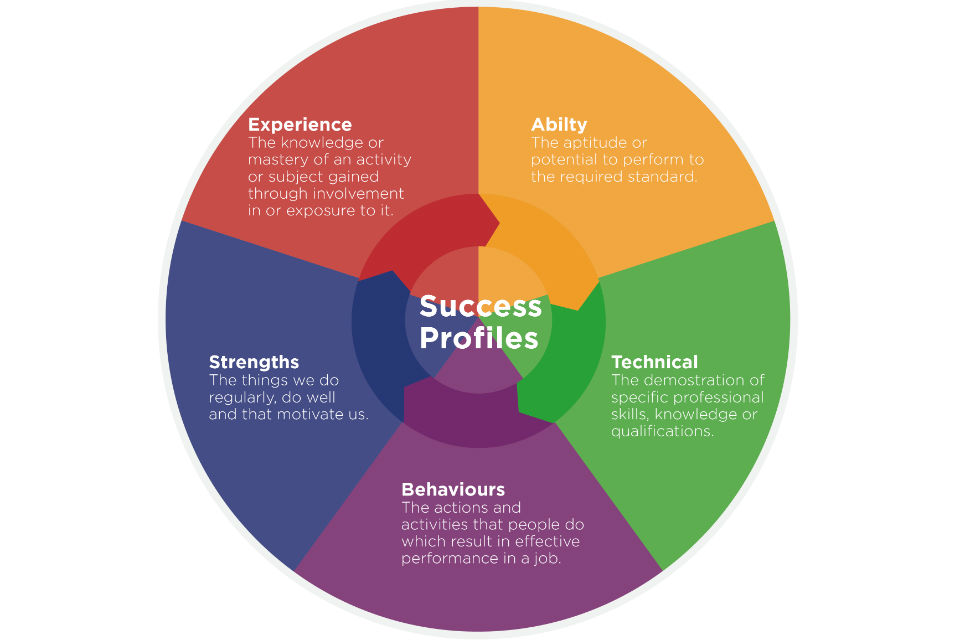
If you’re a civil servant, think back to when you joined government or got your most recent post. Do you remember filling in the application form? How long did it take? And how long did it take to be invited to interview, and to start your new job once you were offered it?
The Civil Service has always prided itself on having a fair and impartial recruitment process – and this is still the case. However, feedback from Civil Service job applicants and recruiters has brought home the fact that recruitment procedures can be cumbersome, rigid and subject to delay.
We’ve listened to this feedback and are changing the ways in which we recruit people. We’ve worked extensively with staff groups and recruitment specialists, both internally and from outside the Civil Service, to devise an approach that continues to be fair and impartial but that works better for every applicant.
After all, we need people to deliver a brilliant Civil Service. At a time of multiple policy challenges, it’s never been more important to recruit a diverse range of talent and give all our people more opportunities to achieve their potential. By the end of this financial year, recruitment decisions will be based on ‘Success Profiles’ rather than purely on competencies.
Why was the competency framework introduced
The Competency Framework as we know it has been used across the Civil Service since April 2013. It has provided a consistent approach to recruitment – identifying the skills, knowledge and behaviours that lead to successful performance and breaking down how these can be demonstrated at each grade. The focus has been on using examples of past behaviour to predict future behaviour, with reference to particular job areas.
This approach has ensured all job applicants are assessed against the same criteria, and that people across government use the same language for recruitment purposes. As such, the Competency Framework has taken the Civil Service forward – and it still has its place.
However, critics argue that, used on its own, the Competency Framework fails to provide a picture of a whole person – the focus is on snapshots of how that person has behaved in specific situations. The Competency Framework can also inadvertently favour candidates with the knack of ‘bending’ examples to fit the criteria, with a degree of rigidity creeping into how these are applied. External candidates in particular have struggled with this approach.
What are Success Profiles?
Success Profiles provide a more flexible approach to recruitment. While they retain the Competency Framework in the form of shorter, clearer Civil Service behaviours, they draw on a much wider range of elements – providing a more inclusive and accurate approach to assessment and recruitment.
Competencies or, more specifically, Civil Service Behaviours, will be just one of five recruitment elements available within Success Profiles – the others are strengths, ability, experience and technical skills. This approach builds on an individual’s natural strengths and talents, giving job applicants greater opportunity to demonstrate their suitability for a specific role. It also enables recruiting managers to tailor criteria and selection methods to vacancies, maximising their ability to match the best candidate to each role.
For these reasons, Success Profiles are set to create a more level playing field for internal and external candidates alike. They will modernise and open up Civil Service recruitment, attracting a more diverse pool of candidates while helping to unlock the talent that already exists within government – an important driver for ensuring the Civil Service is a great place to work.

Promoting 'A Brilliant Civil Service' through the Workforce Plan
This brings me to the Civil Service Workforce Plan, the framework for delivering our vision of ‘A Brilliant Civil Service’ – one that is inclusive, innovative and empowering. This far-reaching plan sets out key areas of transformation for the Civil Service between 2016 and 2020. It will help to ensure we have the skilled and motivated workforce we need to navigate our way not only through EU Exit, but through the revolution in digital technology that has transformed all our lives and ways of working.
Underpinned by a commitment to get the basics right, the Workforce Plan is already delivering on its promises to transform the way our people work. Progress is faster in some areas than others, but the work under way is providing the foundation for the changes and improvements we want to see.
The Workforce Plan is defined and supported by five challenges:
1. The Civil Service must attract and retain people of talent and experience from a range of sectors and all walks of life
The ability to draw upon the largest talent pool possible, and to move people swiftly into and across the Civil Service, is the driving force behind Success Profiles.
2. The Civil Service must build career paths that encourage a breadth of experience and a depth of expertise
We’ve already begun to recognise the range of professions that make up the Civil Service, and the Workforce Plan will take this work further. Career frameworks and career pathways are increasingly enabling individuals to build and transfer job skills and behaviours from one context to another, supported by focused learning.
Added to this, the new Careers Website and Government Recruitment Platform will deliver a customer experience that is quick, efficient and meets the needs of users at every stage of recruitment.
3. The Civil Service must develop world-class leaders who are inspiring, confident and empowering
The Leadership Academy launched in 2017 takes a ‘leaders teaching leaders’ approach, bringing leaders together from across the Civil Service to share experiences and expertise.
4. The Civil Service must be the most inclusive employer in the UK
This is the ambition set out in the Civil Service Diversity and Inclusion Strategy published in October 2017.
The strategy promises targets for the representation of ethnic minority and disabled staff within the Senior Civil Service by 2020. It pledges to build a culture that attracts, retains and nurtures the best and most diverse talent – putting us in the right place to meet the needs of a modern and diverse Britain. To help make that a reality, departmental goals are incorporated into permanent secretaries’ performance objectives; and a task force, chaired by Civil Service Chief Executive John Manzoni, will support departments to reach those goals.
5. The Civil Service must develop cost-effective and flexible reward structures that enable us to attract, retain and develop the very best talent
The Civil Service is committed to developing a long-term reward framework that supports the transfer of skills into, out of and across government – one that maintains financial constraint while ensuring coherence in pay levels for similar roles across government.
We’re already creating a flexible reward framework in the Government Commercial Organisation and introducing new pay ranges for roles in the Digital, Data and Technology (DDAT) Function, which help to ensure consistency and competitiveness with the wider market. We’re continuing to work on pay solutions for other specialist groups.
These are exciting as well as challenging times for the Civil Service. While there is some way still to go, the Workforce Plan provides a framework that is both aspirational and practical.
Success Profile pilots in Government
To test how Success Profiles were likely to land in government, Civil Service researchers ran pilots in a number of departments. These included a focus on strengths-based assessment, one of the five recruitment elements available within Success Profiles.
An important conclusion was that a ‘blended’ approach, which uses strengths alongside competencies, provides a fairer approach for all. This is because less experienced candidates have the opportunity to demonstrate their potential, strengths, enthusiasm and transferable skills, not just their experience.
To ensure the best possible approach to recruitment and retention, Civil Service researchers also looked at what organisations outside government are doing.
Summary of outcomes
Most departments felt ‘blended’ interviews provided better insight to the candidate.
Case studies showed candidates enjoyed the interview process more.
There was some evidence that strengths-based assessment in structured interviews added unique value, although competency-based assessment still had a place. The blended approach was considered optimal.
Provided interviews were structured for a consistent candidate experience and that all interviewers received appropriate training, there appeared to be no practical difference in how candidates performed in either competency-based or strengths-based questions in terms of ethnicity, gender and age. Neither approach appeared to advantage or disadvantage particular groups.
Transition to Success Profiles
Between April 2018 and early 2019, there will be a period of transition while departments are putting Success Profiles in place.
During this period:
- if you’re applying for a job, please check the advertisement for information about the selection criteria you’ll be assessed on; and
- if you have a vacancy, check with HR to see which approach your department is using.
What’s being delivered in 2018/19?
- Civil Service Success Profiles – a new approach to recruitment.
- Civil Service Careers Website – to ensure we get the best engagement with the best talent.
- New Civil Service Jobs platform for civil servants to find and apply for jobs.
- New recruitment platform – a candidate website and applicant tracking system (ATS) designed to support the recruitment process.
- New platform for learning to deliver Civil Service Learning products. Like the other websites, this will conform to Government Digital Service (GDS) standards and will be tested with diverse user groups before it’s launched.

3 comments
Comment by Chris posted on
Enthusiasm is fine and we all have to start somewhere but experience is also key. If we water down that aspect it will not lead to good outcomes.
Comment by Marija Liudvika Drazdauskiene posted on
This post describes well the criteria in recruitment and the frameworks proposed. However, it does not throw light on potential vacancies nor illustrates how the criteria apply in the recruitment for different sectors or areas of employment. Yet competences in the field of technology seem to be in demand. The recruitment criteria are likely to improve selection and to make the process favourable to the candidates. Thank you.
Comment by TRACY DEWHURST posted on
Thanks Rupert - all sounds sensible as I know that not only external but internal candidates struggle to get to grips with the competency framework and don't get me started with the professional roles that I've advertised in the past.
My main question really is how are you working with Departments to help them support their people through the new process and ensure that existing civil servants know about the new approach, fully understand it and most importantly are ready and informed to apply for jobs when advertised using the new competencies as I assume different departments may role this out at different times?